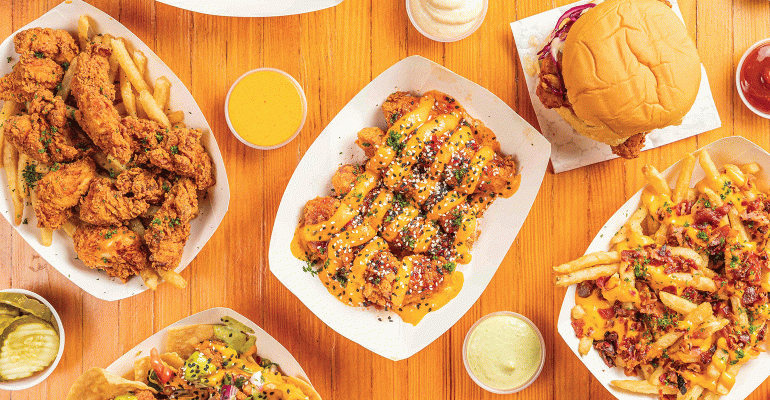Sticky’s Holdings, parent company of the New York City-based chicken tender concept Sticky’s, filed for Chapter 11 bankruptcy protection on Thursday, largely citing the pandemic as the reason for its financial troubles.
In filings with the United States Bankruptcy Court for the District of Delaware, the company reported $500,000-$1 million in assets and $1 to $10 million in liabilities, with the largest creditor being distributor U.S. Foods. Real estate and law firms also were significant creditors as the 12-unit chain faced a trademark infringement lawsuit from Sticky Fingers Restaurants LLC, a South Carolina-based barbecue concept (Sticky's was previously known as Sticky's Finger Joint), and a legal judgment against it for vacating its New York City headquarters early in violation of its lease.
But Sticky’s, which operates restaurants in New York and New Jersey, most of them in Manhattan business districts, said COVID-19 and its aftereffects were the main cause of its woes.
It has shuttered three restaurants and a ghost kitchen, but CEO Jamie Greer said in the filings that the company planned to continue operations and filed motions allowing it to pay employees and maintain “certain customer programs” among other petitions.
She said the chain enjoyed initial success, with sales of $500,000 in 2013 growing to more than $22 million in 2023.
However, “COVID-19 dramatically impacted the restaurant industry … including significantly greater reliance on food delivery apps to generate business,” which in turn raised costs.
Even as the pandemic subsided, foot traffic was down as fewer office workers came to the city center five days a week. That was exacerbated by commodity prices, including chicken and potatoes, which “have seen unprecedented increases,” putting further pressure on margins. In response, Sticky’s raised prices, “which had a further negative impact on traffic.”
Greer said the chain adjusted to the new realities, and “cash flow has steadily improved,” but Sticky’s is still recovering from “the financial burdens and new business realities that resulted from COVID-19.”
The chain did enter equity financing in late February and were able to convert notes worth around $2.42 million, which helped, but not enough, hence the move to reorganize.
The documents aid the motion for bankruptcy protection was filed “with the goal of right-sizing their balance sheets and confirming a plan of reorganization that will provide value to their creditors. The Debtors look forward to working with their creditors, vendors and other parties in interest as they chart a path to restructuring their balance sheet, realizing their full economic potential for the future, and continuing to provide their customers with the delicious meals they desire for years to come.”
Contact Bret Thorn at [email protected]

